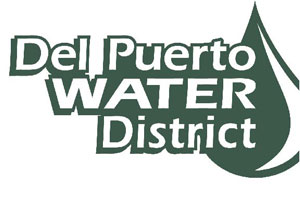Funding for Friant-Kern Canal Repairs May Come
Senator Melissa Hurtado Introduces Bipartisan Bill to Fix Friant-Kern Canal
News Release
State Senator Melissa Hurtado (D-Sanger), representing the 14th Senate District in California, along with principal co-authors Senator Andreas Borgeas (R-Fresno), Assemblymember Devon Mathis (R-Visalia), Assemblymember Dr. Joaquin Arambula (D-Fresno), and Assemblymember Rudy Salas (D-Bakersfield), announced last week the introduction of Senate Bill 559. The bipartisan-supported legislation will secure California’s water supply by investing $400 million in general funds towards the Friant-Kern Canal, one of the Central Valley’s most critical water delivery facilities.
Currently, the Friant-Kern Canal’s conveyance capacity has degraded due to several factors, including severe land subsidence caused by regional groundwater overdraft. A portion of the canal, roughly 20 miles long, has subsided twelve feet below its original design elevation, including three feet of subsidence from 2014 to 2017. As a result, the canal has suffered the loss of 60 percent of its carrying capacity—constricting the delivery of water to some of California’s most vulnerable communities.
“From 2012 to 2016, California experienced one of the most severe drought conditions. As a result, many of our farmers, families and entire communities within the Central Valley continue to experience limited access to one of their most fundamental rights—clean water,” Hurtado said.
“The Valley’s socioeconomic health depends on the conveyance of clean and safe water. Not only does this canal support nearly 1.2 million acres of family farms in California, but it provides one in every five jobs directly related to agriculture,” Hurtado continued. “For this reason, I am proud to stand with my colleagues to introduce SB 559. This legislation prioritizes our most disadvantage communities by restoring water supply in the Central Valley.”
“The Friant-Kern Canal has lost 60 percent of its carrying capacity in some locations. This problem threatens about 350,000 acres of highly productive farmland below the damaged portion of the canal, and also limit opportunities to maximize groundwater recharge projects that will be very important to helping the Valley comply with the Sustainable Groundwater Management Act,” said Jason Phillips, CEO of the Friant Water Authority. “On behalf of the farmers, businesses, and communities who rely on the Friant-Kern Canal, we very much appreciate Senator Hurtado’s leadership on this legislation.”
“Today, we are fighting for the future of the Central Valley, and I am pleased to join my colleagues in this bipartisan effort and support funding for the Friant-Kern Canal,” Borgeas said. “Valley farmers and our communities depend on this infrastructure to ensure a reliable supply of water. By restoring the canal to its fully operational state, we ensure the delivery of clean and reliable water supply to our communities and farmers. This investment in our water infrastructure is long overdue and critical for our valley.”
“California faces a stark reality when it comes to water,” Arambula said. “Scarce water supplies, aging infrastructure and a growing population are some of the stressors on our state’s water system. That is why we need real-time solutions to our long-term water challenges. Restoring the Friant-Kern Water Canal will help us protect our existing water supply while we work on reaching sustainable solutions that will get water out to our communities.”
“SB 559 is crucial to keep the Friant-Kern Canal, the largest artery for water on the east side of the Valley, afloat. This measure is extremely important to keep this economic engine which powers our economy and provides tremendous benefit locally, statewide and even nationally. Failing to fix the Friant-Kern Canal is not an option, simply because having water is never an option. I am proud to coauthor this measure with Senator Hurtado and look forward to bringing this funding to the Valley,” Mathis said.
“Water is the lifeblood of the Valley and the backbone of California’s economy. Senate Bill 559 is a step towards bringing the Friant-Kern Canal to its full capacity and addressing the State’s critical water needs. This measure will invest in our future by building water infrastructure projects and helping our local water districts fulfill their sustainable groundwater management plans,” Salas said.
“On behalf of the City of Porterville, I am very appreciative of our leaders’ efforts and support by introducing SB 559,” said Porterville Mayor Martha Flores.
“The Friant-Kern Canal is the lifeblood to the southeastern San Joaquin Valley, and the canal being fully-efficient with the ability to carry surface water to its designed capacity is essential, especially in consideration of the Sustainable Groundwater Management Act,” Flores continued. “The Friant-Kern Canal plays a valuable strategic role in the sustainability of Porterville as the city seeks to enhance its surface water recharge program and reduce its groundwater footprint.”

























